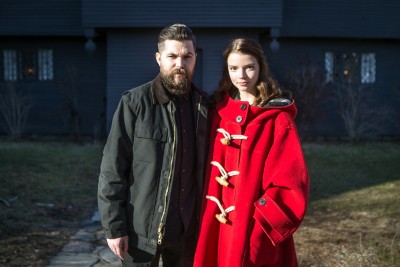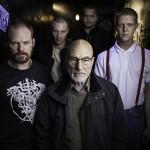
“The Witch” is an independent film that details the life of a Puritan family in 17th-century New England. After being cast out of the local settlement due to their fundamental religious ideals, the family members seek the isolation of the woods to start their new lives. As strange hauntings begin to occur, the family slips into paranoia when they believe that a witch is haunting them.
Coming out of 2015’s Sundance Film Festival, Robert Eggers surprised the world when his directorial debut won him the Directing Award for U.S. Dramatic at the festival. Many describe his work as a horror film due to its unnerving feeling, but Eggers said he disagrees.
“In talking about genre, I don’t care what you call [it] … if you’re into it, that’s good enough for me, but I think the genre that it’s closest to is the early fairy tales,” Eggers said in a roundtable interview. “These early fairy tales, something I love about them so much, and I’m not unique in this thought, is that I saw them as these unconscious examinations of these complex family dynamics.”
These “complex family dynamics” become a major theme that often overshadows the witch as the main source of evil in the film. Eggers conducted a lot of research on old fairy tales, and even offered a disclaimer, saying that much of the story was based off of primary sources from the time period.
“I started going to the library, and just anything witches or New England-related, I took out,” he said.
The film focuses on building up the setting, and the fact that Eggers was a production designer before moving into the director’s chair probably didn’t hurt.
“It took four years to get the film financed, so I had a lot of time to think about what I wanted to do,” he said. “I understood what I wanted things to look like, what I wanted the photography to be like and even the music, to a great degree.”
Eggers’ Sundance award spoke to his talent in working with the cast members, two-thirds of whom were children. Eggers said he enjoyed working with the kids.
“[The child actors] couldn’t really know what this film was,” he said regarding the dark nature of the film. “They had a Disney-fied version of what the story was. With them, it was more like puppetry, dance choreography and games to elicit these things.”
Anya Taylor-Joy, who plays Thomasin, the film’s protagonist, said that while shooting the film, “there was so much love.” Although the subject matter leaned toward the heavier side, she said the kids and adults alike had a good time. She also touched on her status as a newcomer to acting in feature films.
“I originally thought that I was never going to get this role in a million years because it was written as plain, and I’m pretty weird-looking,” she said.
Eggers’ original idea for Thomasin’s character reportedly changed when he met Taylor-Joy.
“I realized that I was looking for the wrong girl when [Taylor-Joy] auditioned,” Eggers said. “She would not cut it as a Puritan, and that brought a lot to the role that was unexpected.”
As Thomasin, Taylor-Joy was put through some very intense acting scenes that she said took her skills to the limit.
“I have a very overactive imagination, and I have a lot of empathy for my characters,” Taylor-Joy said. “A lot of those hard, difficult scenes were cathartic. At the end of the movie, I got so incredibly depressed. It was because I hadn’t realized that characters are real for me … and I was sad that I wasn’t going to get to go see her again.”
Through the production of “The Witch,” Eggers and Taylor-Joy struck a bond that brought out the best in both for the film.
“Rob would say, ‘Yes, I created her, but you’re bringing her to life,’” Taylor-Joy said. “That was so incredible to work with, and it’s informed everything I’ve done since.”
By winning a prestigious award at Sundance and getting a wide theatrical release (something rare for an independent film), “The Witch” clearly does many things right. Mainly, it shows the world the incredible talents of newcomers Robert Eggers and Anya Taylor-Joy — two people that will likely become stars within the movie industry.














